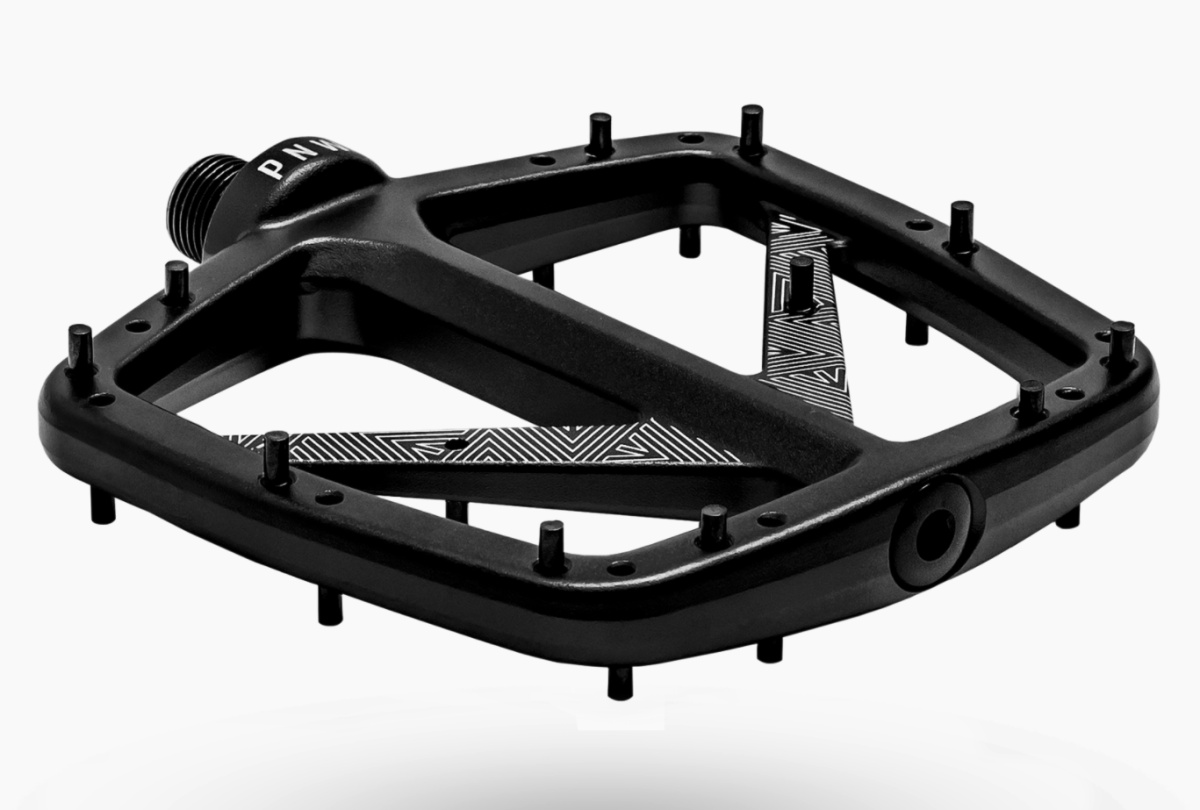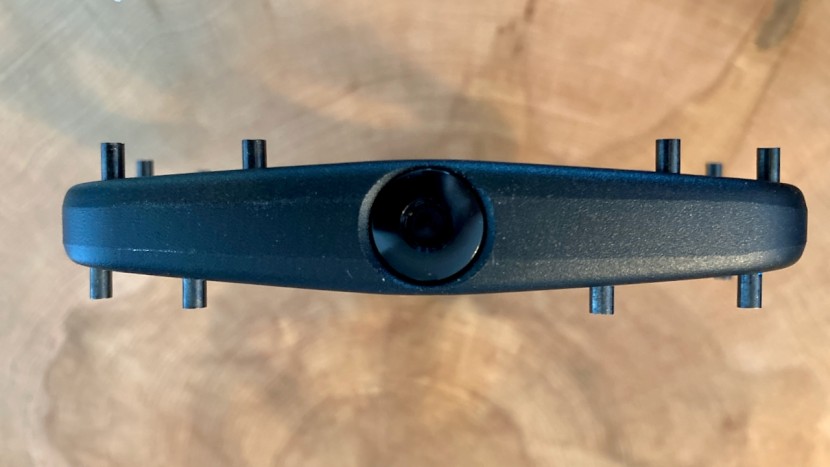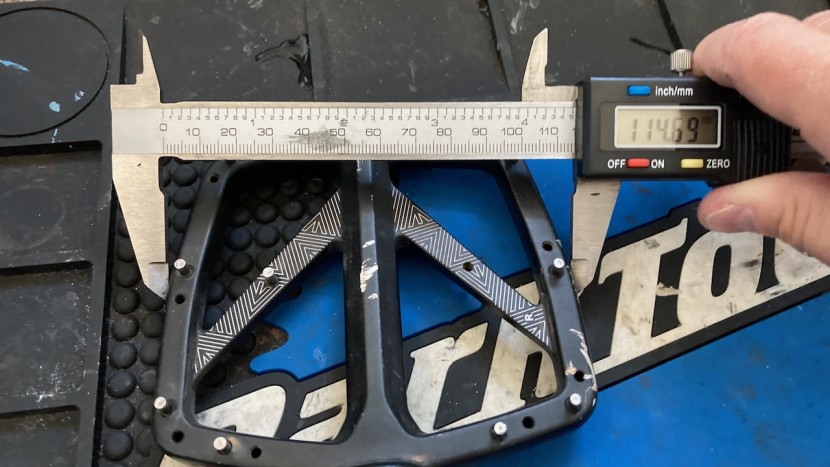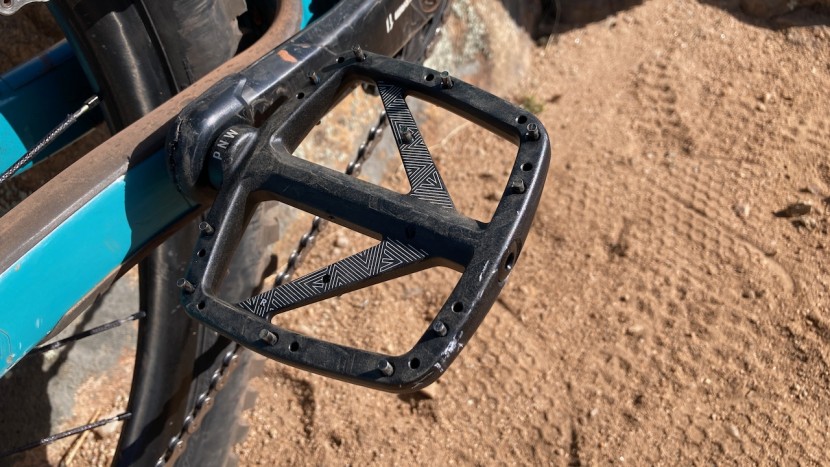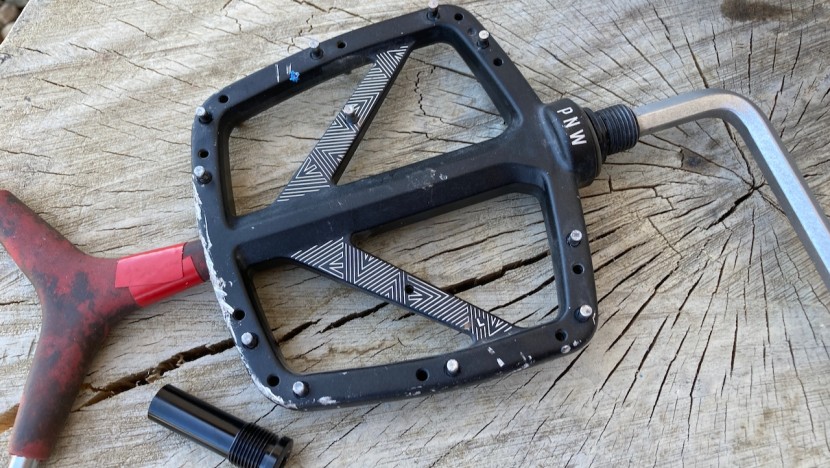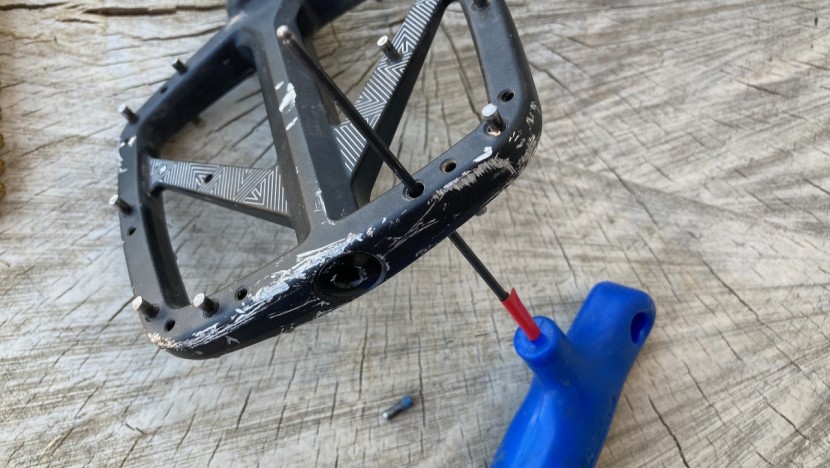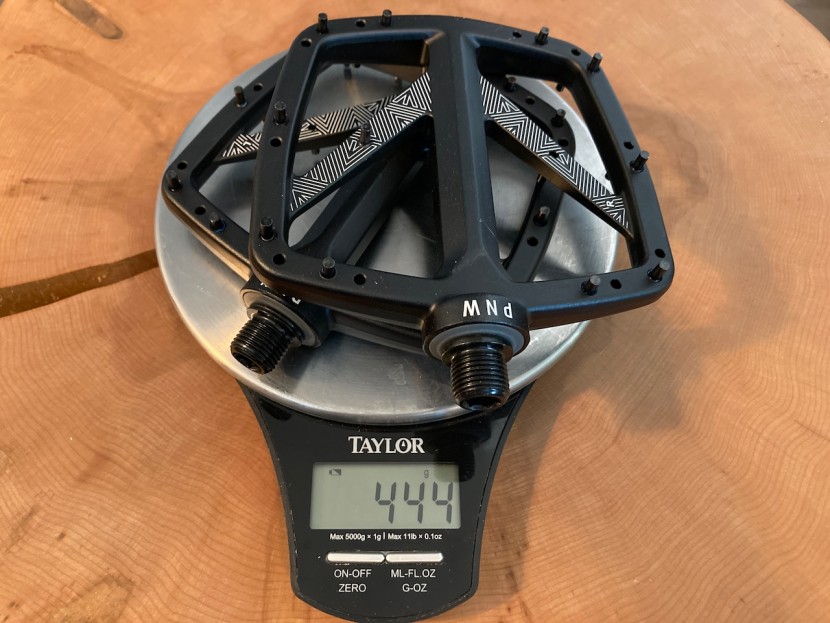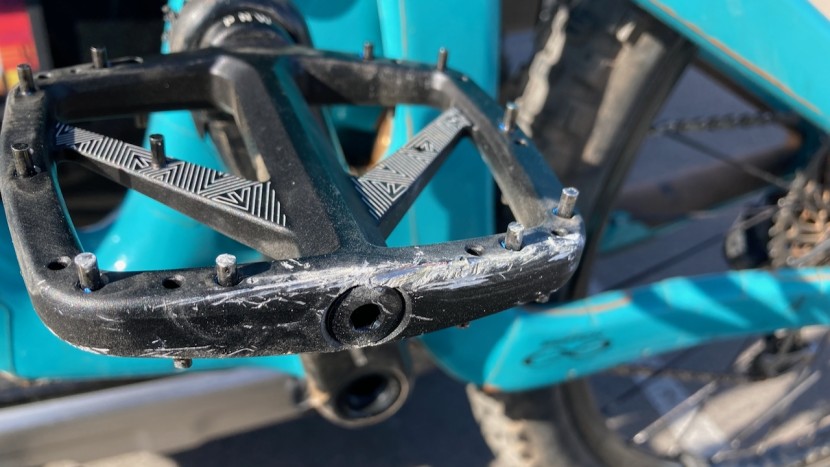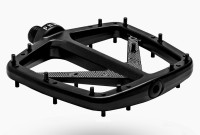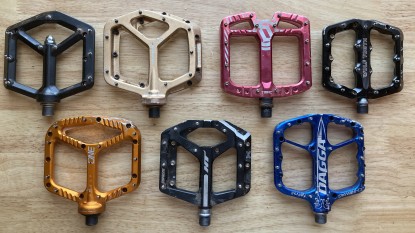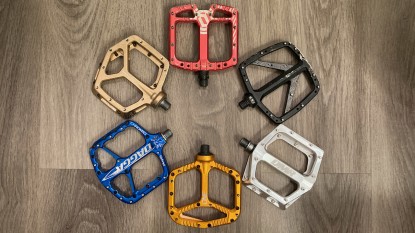PNW Loam Pedal Review

Our Verdict
Our Analysis and Test Results
The newly released PNW Loam is one of the more affordable pedals in our review. Despite its sleek design, we found its large platform is prone to hanging up on rock pinches and its bearings spin too freely. Servicing the pedal's axle is a breeze and the top load pins are easy to remove, but the 2mm hex head makes them easy to strip. Overall, there are some good traits about the Loam, but they were outperformed by others in our testing.
Grip and Traction
The Loam is one of the few pedals in our test that is significantly higher at the axle than at the leading and trailing edges. On our calipers, the Loam measures 11.22mm at the leading and trail edges and 15.9mm at the axle. This convex shape is very apparent from the side of the pedal where you can also see the height difference in the pedal's pins. The height of the pins on the Loam are not adjustable and PNW uses a longer pin at the leading and trailing edge and a shorter pin on the cross brace that goes from the axle to the pedals leading edge. This pin height difference creates a concave pin platform shape for the foot, despite the platform being convex, and this combination provides less traction than we would like.
The size of our tester's feet really affects the amount of grip they have with the Loam pedal. For our testers with a larger size EU 45 shoe, their shoe fully covers the pedal pins which bite into the sole providing good grip, but not outstanding. For our testers with size EU 40 feet, they have trouble finding a good foot placement. The pins on the outside edge of the pedal do not contact their shoe reducing the grip and traction and creating some lateral movement.
Platform
The PNW Loam is the largest pedal in our review measuring 115mm x 113mm. Our testers with size EU 45 feet like the large 6061 aluminum body which has a rounded shape to the outside of the pedal platform. But those with size EU 40 feet find the platform too large, especially in width, making it difficult to find a good foot placement. So, it worked well for larger feet, but those with smaller feet may have difficulty with the overall platform width.
The Loam is one of the thinner pedals in our review which generally means fewer pedal strikes. Our favorite local trails are various forms of granite (decomposing, slabs, and rocks) with lots of tight rock pinches. During testing, the Loam's platform got hung up on rock pinches and suffered the most damage of any pedal in our group. The outside edge of the pedal does not taper as quickly towards the leading and trailing edges, so has a larger contact patch in rock pinches that resulted in scraping up the length of the pedal's outside edge. When we use a narrower pedal on the same trails, we have fewer pedal strikes.
Mobility
PNW uses sealed cartridge and roller bearings in the Loam, which spin very, very freely, like a top. The problem with the Loam's bears spinning so freely is that they continue to spin if you come off with force or flick them with your shoe, making it difficult to place your foot back on, especially if you slip a pedal. Our testers prefer a pedal that spins more slowly than the Loam and one that is more predictable with some drag in its rotation.
For our testers with smaller feet, the pins of the pedals on the outside edge either fall just on the edge of the shoe sole or outside of it, which made repositioning our feet even more difficult and involve a full unweighting of the pedal. Our testers with larger feet also noted they have to fully unweight the pedal in order to reposition their foot.
Servicing
Servicing the PNW Loam only requires two tools and are ones that most riders already have, a 5mm and an 8 mm hex. To access the axle, you need to first remove the end cap from the pedal body and then place the 5mm hex into the pedal body and the 8mm hex into the spindle and twist. The axle will then easily pull away from the pedal body allowing access to the bushing and bearing.
PNW uses top load pins on the Loam, and this design works well when pins get bent since they don't have to go through a hole to be removed. The biggest downside to the Loam's pins is they only use a 2mm hex and the direction to remove the pin is clockwise, which is the opposite of most pedals. This smaller size hex makes stripping the head of the hex much easier in general. And because the rotation direction is opposite of most other pins it means just one rotation in the wrong direction strips the pin's head. Unlike many companies, PNW does not include any replacement pins for the Loam but does provide two pedal washers.
On the cross brace of each pedal is an imprint of either “L” or “R” to help prevent you from threading the pedal onto the wrong crank arm and destroying your threads, a thoughtful touch since there is no text on the axle to help you determine left from right. PNW does have a lifetime warranty on all their components, including the Loam pedals, which provides a bit of comfort.
Weight
Weighing 444-grams per pair, the PNW Loam is one of the heavier pedals in our test.
Value
The PNW Loam is a very reasonably priced pedal, and they may work well for those with larger feet. Overall, though, we feel there are other pedals in our test that are a better value that will work better for people with varying foot sizes. The pedal's huge platform makes it easier to get hung up on sections of trail with tight rocks, the bearings spin too freely, and the heads of the pins are too easy to strip with their 2mm size.
Conclusion
There are a lot of great performing pedals on the market, and when we add value into the equation, we feel there are other models that perform better than the Loam at a similar price point. The Loam certainly gets the job done and is a breeze to service, but we feel its large platform design, free-spinning axle, and weight detracts from its otherwise attractive price tag.
| Awards | |
|---|---|
| Price | $99 List Check Price at Amazon |
Overall Score  |
|
| Star Rating | |
| Bottom Line | Reasonably priced and cool looking, but these pedals don't stand out in a competitive field |
| Pros | Slim profile, easy to service, better for larger feet |
| Cons | Platform too large for smaller feel, heavy, bearings spin too freely, small hex heads on pins |
| Rating Categories | PNW Loam Pedal |
| Grip and Traction (25%) | |
| Platform (25%) | |
| Mobility (20%) | |
| Servicing (15%) | |
| Weight (15%) | |
| Specifications | PNW Loam Pedal |
| Measured Weight (per pair) | 444 g |
| Traction Pins (per side) | 11, 2 mm hex head bottom loading |
| Measured Platform Dimensions (millimeters) | 115 mm x 113 mm |
| Platform Profile (millimeters) - not including pins | 11.22 mm at edges, 15.9 at axle |
| Concavity | Convex |
| Q Factor / Distance from cranks to furthest pin | 110 mm |
| Bearings | Sealed cartridge and roller bearings |
| Body Material | 6061 Aluminum |
| Pedal Wrench Type | 8 mm hex |


